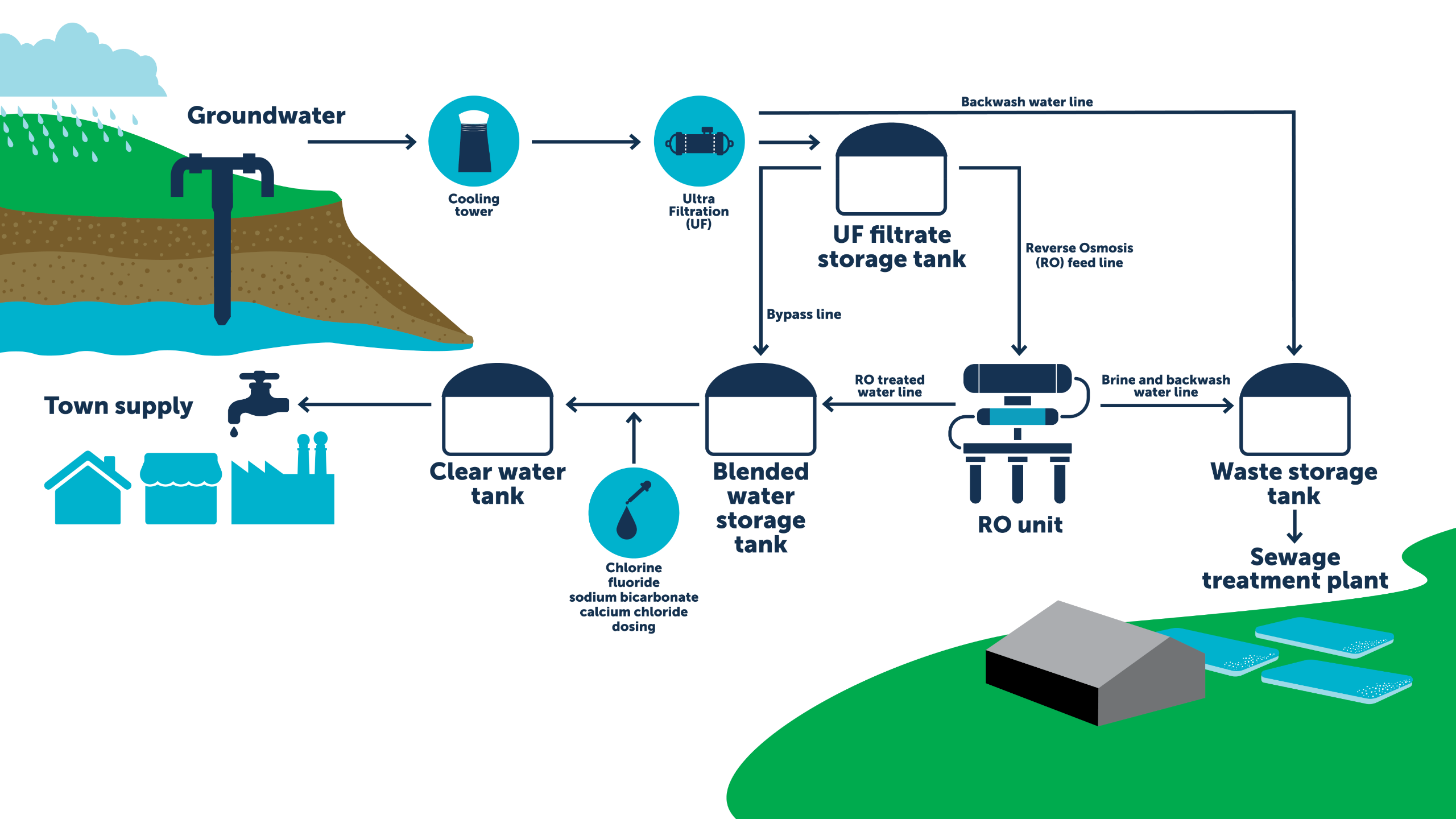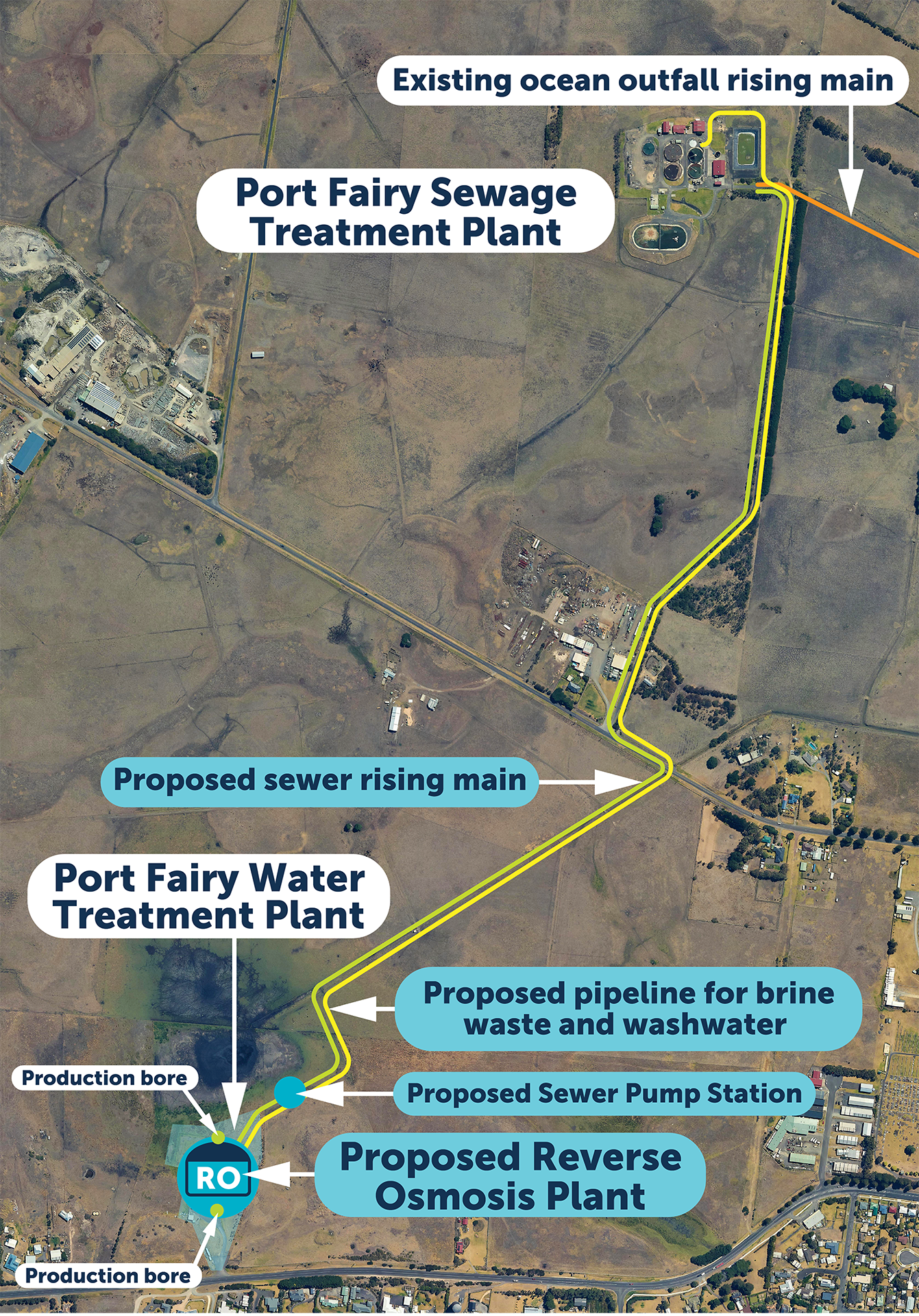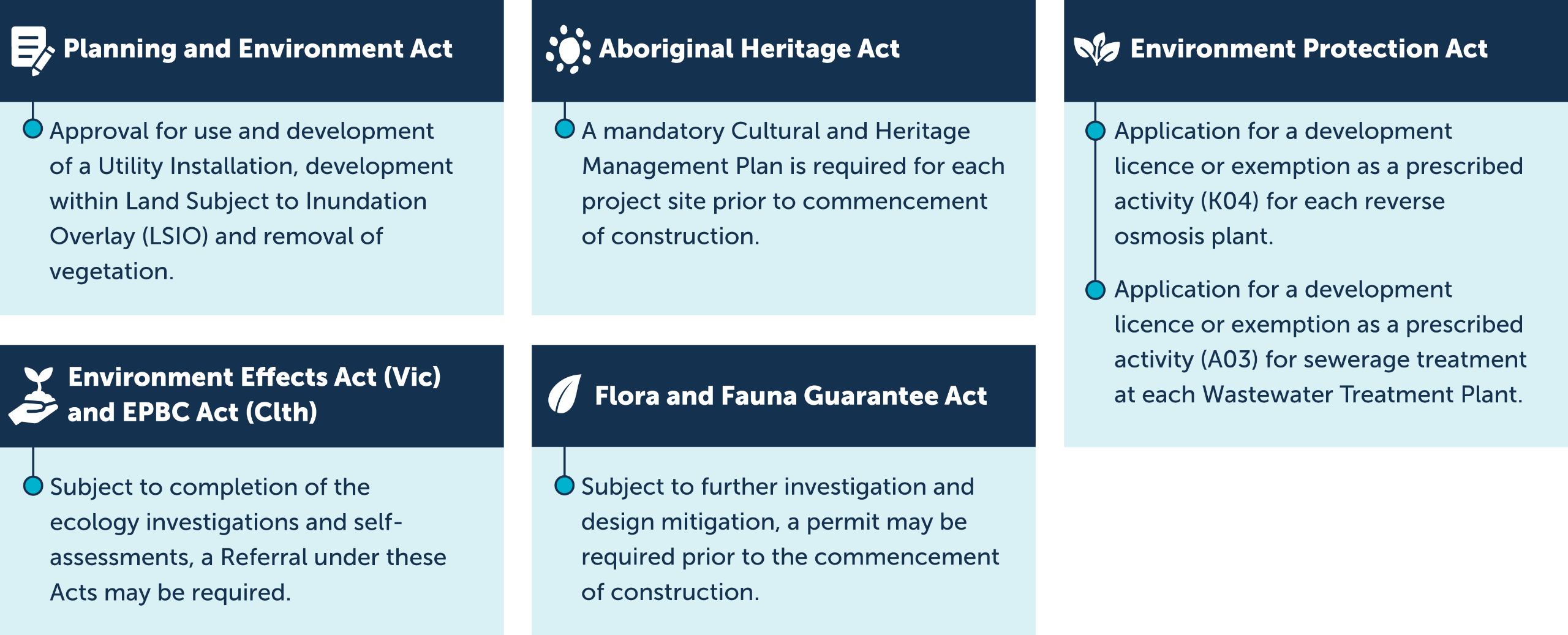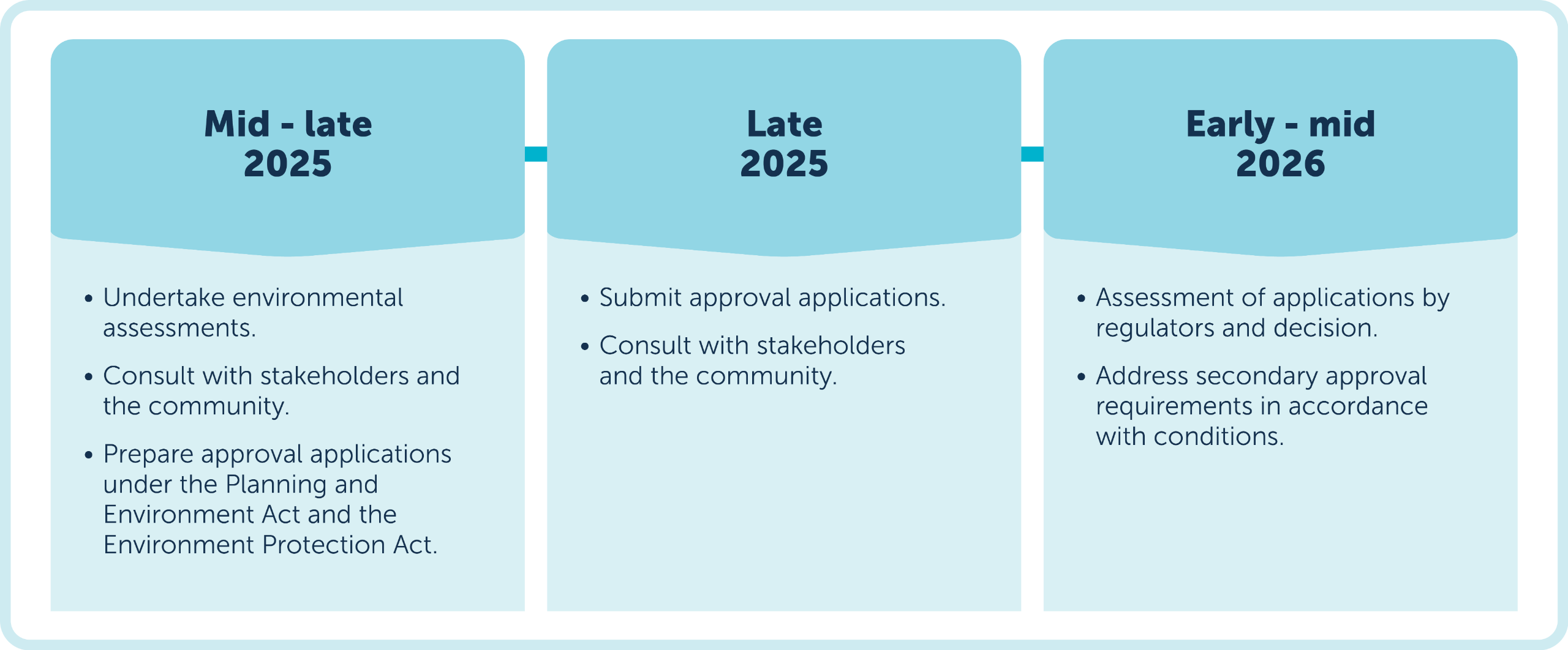Proposed design
Proposed system design
Reverse osmosis is a process that uses enormous amounts of pressure to force salty water through a membrane (a filter with microscopic holes). The salt molecules are generally too big to squeeze through the holes but the water molecules are small enough to pass through. This leaves most of the salt on one side of the membrane and fresh water on the other side.
It will produce quality drinking water that meets our strict quality requirements including standards set by the:
- Australian Drinking Water Guidelines
- Victorian Safe Drinking Water Act
- World Health Organisation.
How the process works
Map of the proposed system
What options were explored?
In 2024, in response to suggestions from the Port Fairy Pipeline Support Group, we completed an additional detailed comparison of the options to connect Port Fairy to the Otway Water Supply System.
You can find out more about these options by clicking the link below.
Infrastructure
The infrastructure for the Reverse Osmosis system will include:
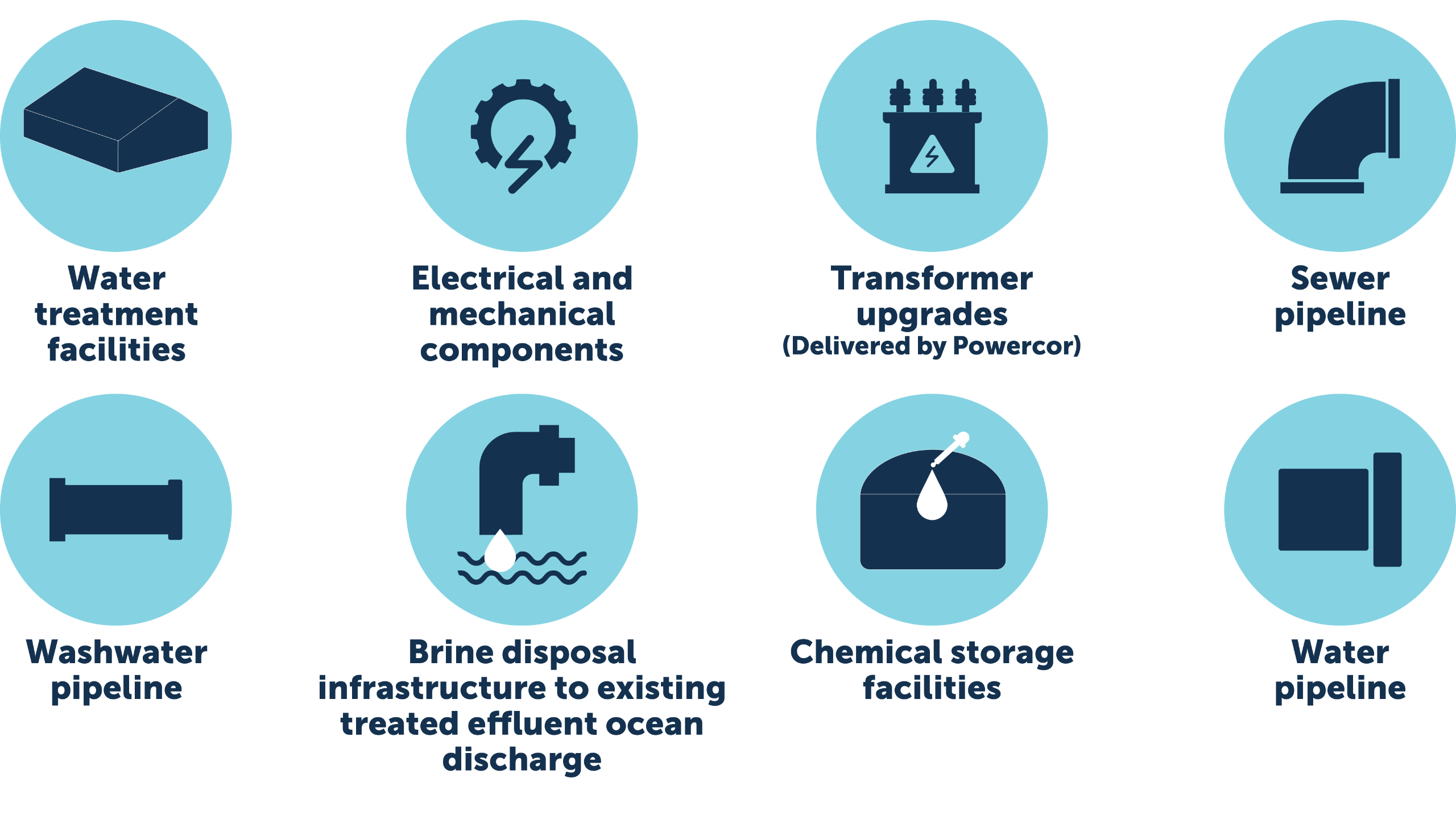
Technical components for each system
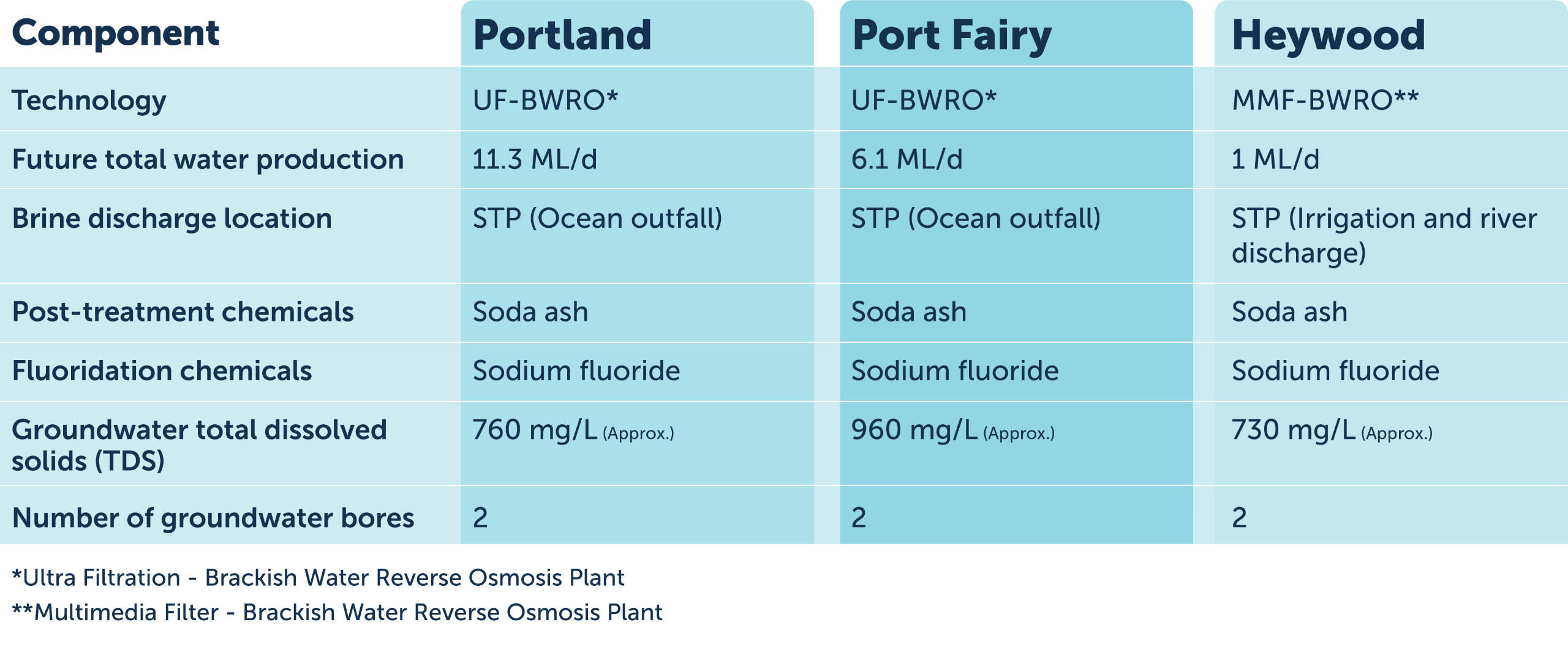
Planning and Approvals
We’re completing detailed planning work and carefully assessing any potential impacts related to the environment, flora and fauna, and cultural heritage.
Planning and approvals
Indicative timelines
Find out more
Find out the detail on technical, cultural and environmental (EPA) requirements and permissions.
What assessments are needed?
To support the applications, we must provide detailed technical assessments based on the functional design for the project. The applications must assess how the project aligns with the General Environmental Duty, planning policy and planning controls, as well as how impacts and risks will be avoided, minimised and managed.
These assessments typically include (but are not limited to):

Potential impacts
Preliminary investigations were undertaken in 2024 to identify potential impacts and to scope what technical investigations would likely be required for the project.
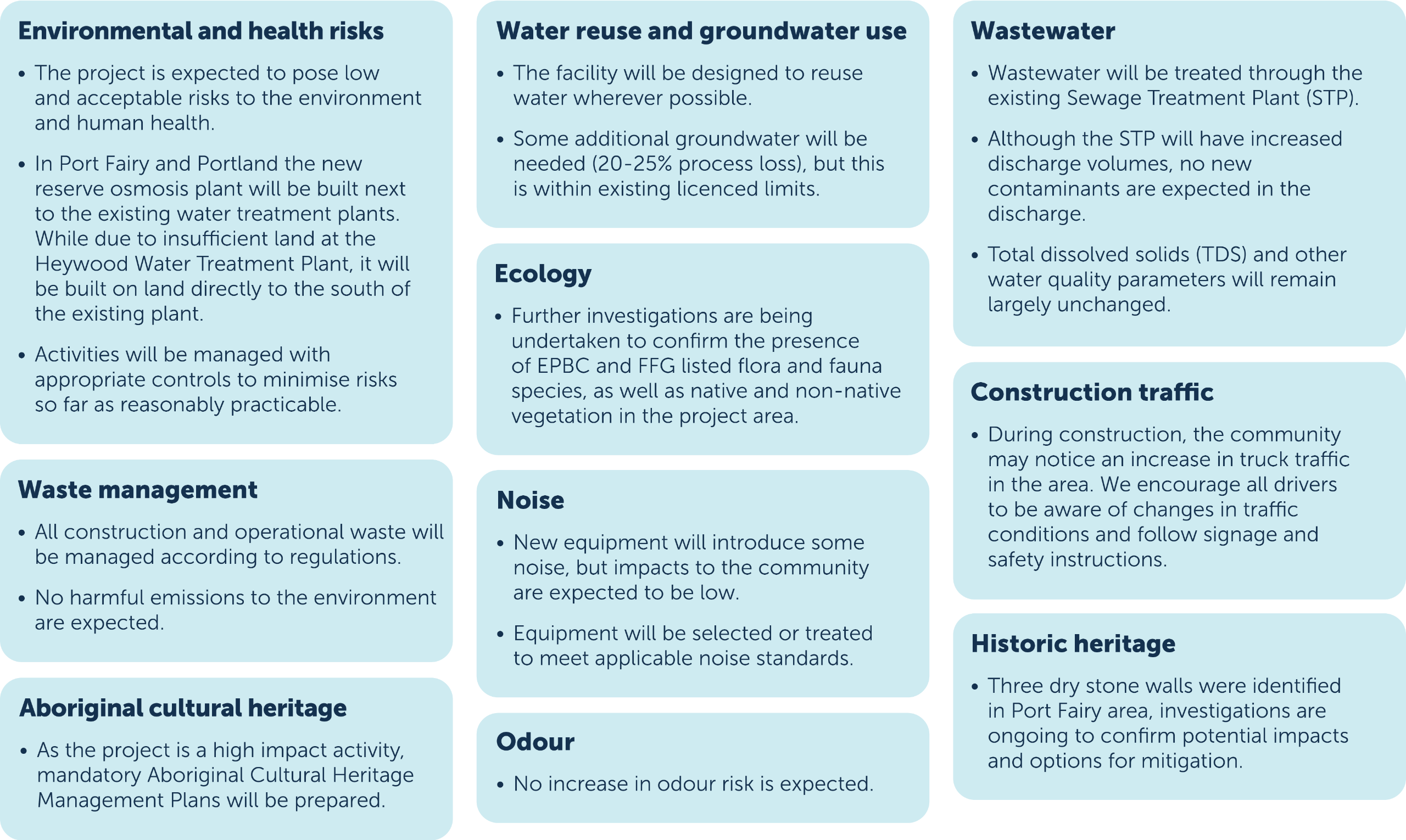
Cultural Heritage Management Plan
An Aboriginal Cultural Heritage Management Plan (CHMP) will be developed for each project site.
A CHMP is a written report prepared by a registered Heritage Advisor. It includes results of an assessment of the potential impact of a proposed activity on Aboriginal cultural heritage, and outlines measures to be taken in order to manage and protect Aboriginal cultural heritage in the activity area.
The Registered Aboriginal Parties (RAPs) are the relevant authorities that will evaluate the plans, taking into consideration the objectives and requirements of the Aboriginal Heritage Act 2006.
The RAPs for the project areas are Eastern Maar Aboriginal Corporation for Port Fairy, and Gunditj Mirring Traditional Owners Aboriginal Corporation for Portland and Heywood.
Why is it required?
The CHMPs are required under the Aboriginal Heritage Act 2006, as the project is a high impact activity occurring in areas of Aboriginal cultural heritage sensitivity (areas where Aboriginal places are more likely to be located), as defined in the Aboriginal Heritage Regulations 2018.
What does it involved?
There are three levels of assessment that may be a part of the cultural heritage assessment:
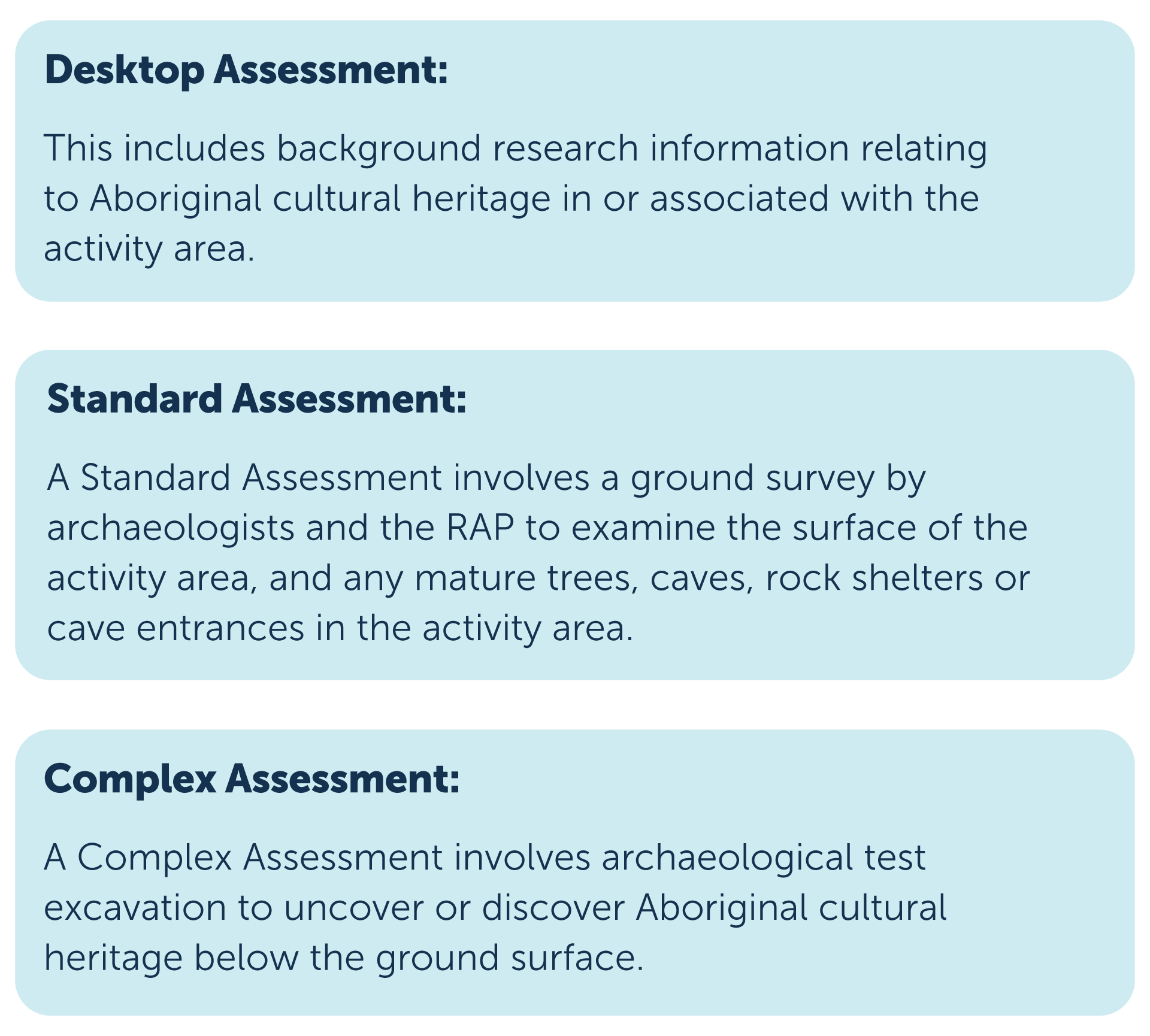
Timeline
Desktop and Standard Assessments have been undertaken for each CHMP.
Complex Assessments will commence in late 2025. The CHMPs are currently scheduled for completion in early 2026.
EPA permissions
The Environment Protection Authority (EPA) permission framework is a tiered system, with licences, permits and registrations being required for different types of activities based on the level of risk to human health and the environment.
What permissions do we need?
The project involves activities that must follow environmental protection laws. Because of their potential impact, they are classified as “prescribed permission activities” under the Environment Protection Regulations. These activities need EPA permission before the project can begin and operate.
The two licences relevant to the project are:
Development licence exemption
A development licence maybe required for the design, construction, or modification of prescribed activities.
However, under certain conditions, a development licence exemption may be granted if the applicant can demonstrate that risks to human health and the environment are eliminated or reduced so far as reasonably practicable, and that any residual risks are acceptable. This includes having a robust risk management and monitoring program, engaging with the community, and addressing any concerns raised.
An application will be prepared in accordance with the requirements of the EPA to demonstrate that the project can manage environmental risks effectively during construction and operation.
Operating licence
An operating licence will be required to enable operations. This will be sought after construction and commissioning has occurred in accordance with the development licence exemption.
What prescribed activities are involved?

Evaluation & behaviour change
Evaluation
As we work on improving the water treatment plants in your town, we’ll also be developing a behaviour change program to help the community drink and enjoy the better-quality water once it’s ready.
During the construction of the new treatment plants, we’ll be focusing on preparing everyone to make the switch to better tasting, better quality water, and we’ll need your help to make it happen!
Behaviour change programs not only educate, they also encourage active participation, build new habits, and create lasting changes that benefit both individuals and the community.
Poor tasting tap water leads to...
There is direct evidence that water consumption by adults and children in Portland, Heywood and Port Fairy is significantly lower than the Victorian averages.
Data shows that people in the Glenelg and Moyne Shires drink less tap water both in how many cups they drink each day and how many report drinking none at all.
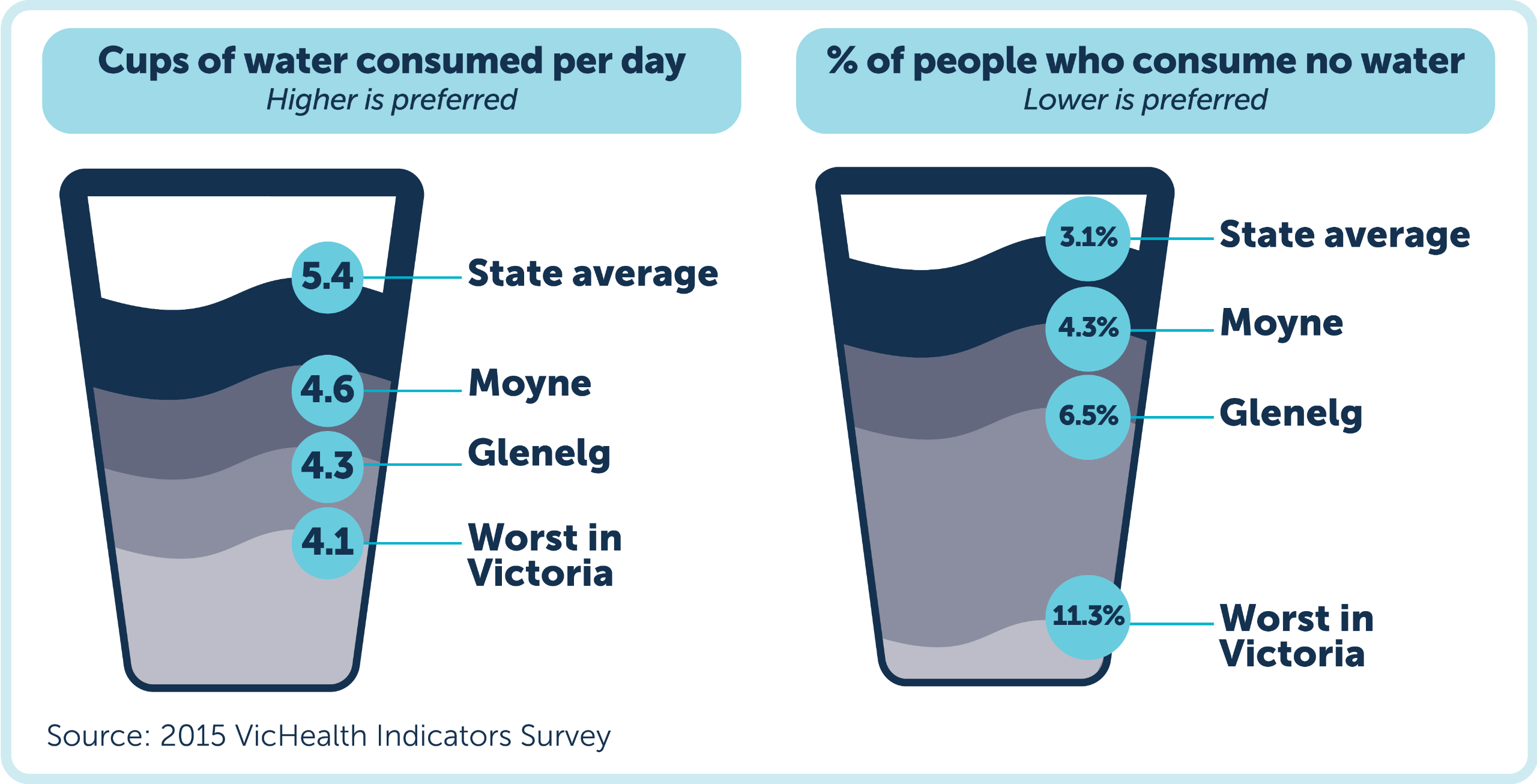
What to expect
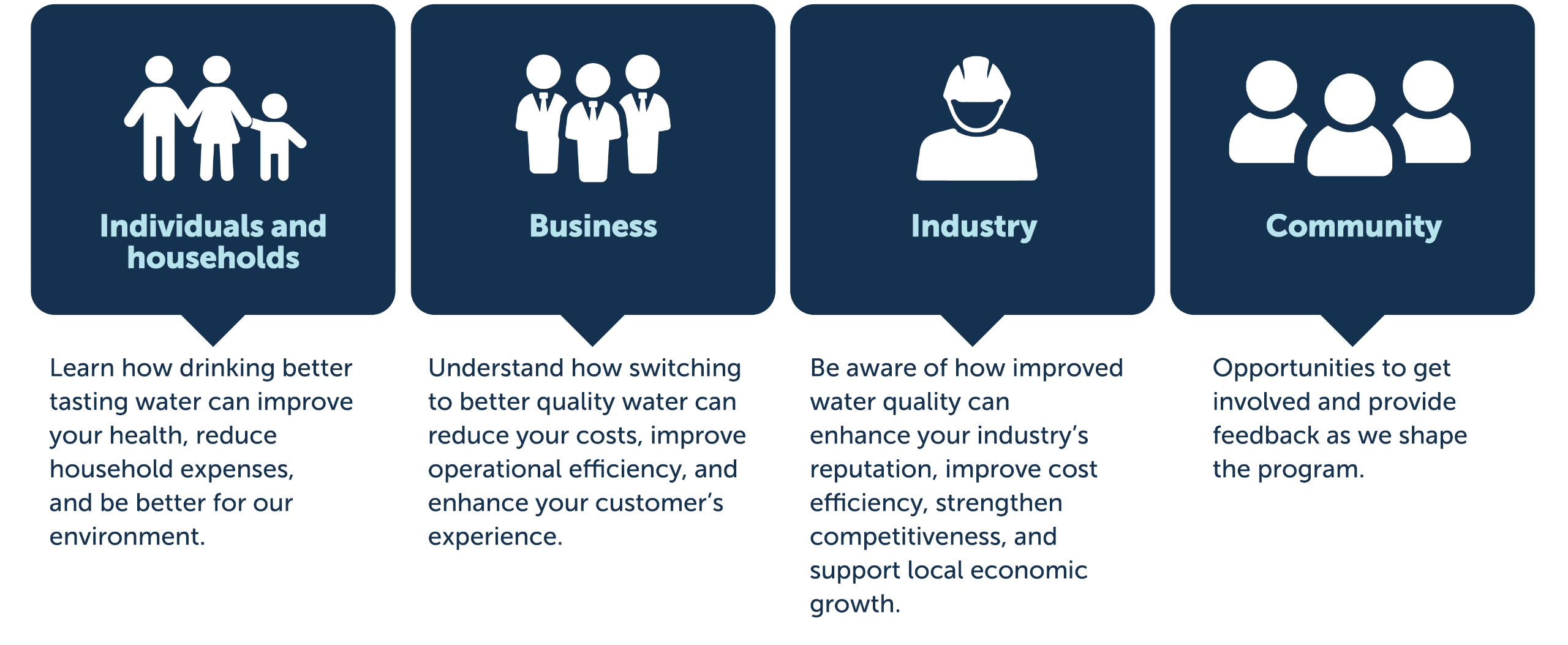
Why it matters
Making simple changes in our water habits can greatly enhance how we experience the upgrades. By working together, we can all enjoy the benefits of better tasting water.

